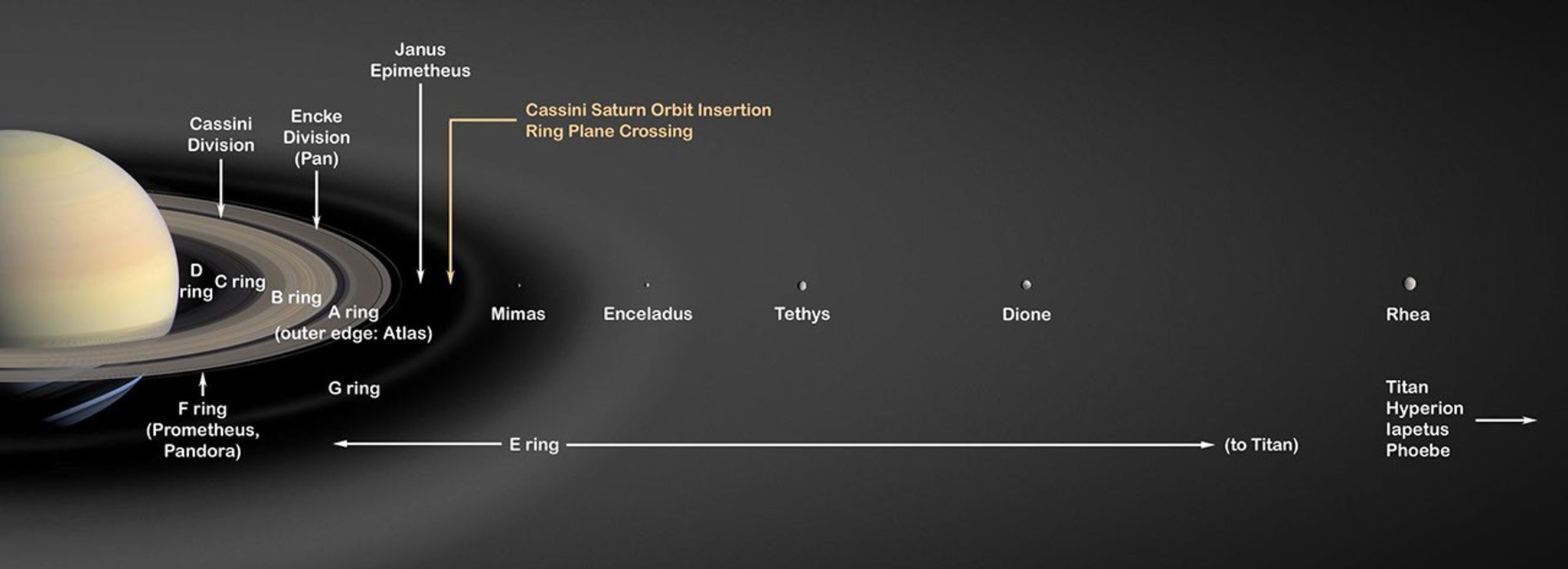Saturn's Rings | 20 Feb 2025
A study challenges the belief that Saturn’s rings are 100 million years old, suggesting they could be as old as the Solar System itself.
- Earlier assumptions based on Cassini spacecraft data suggested Saturn’s rings were young due to their cleanliness, surprising scientists who expected dark dust from space debris.
- But the study finds dust evaporation keeps them clean, proving they may be ancient.
- Cassini: Launched by National Aeronautics and Space Administration along with the European Space Agency's Huygens probe to study Saturn and its moons.
- Saturn: It is the second-largest planet after Jupiter, and is composed of hydrogen and helium. Located at 9.5 Astronomical Unit (AU) (AU is the distance from the Sun to Earth) from the Sun.
- Saturn has 146 moons and is a gas giant of hydrogen and helium.
- Saturn’s Rings: It consists of seven main rings, named in the order of their discovery (D, C, B, A, F, G, E), becoming fainter as they move outward, primarily made of icy snowballs.
- The main rings are A, B, and C, with the A ring easily visible through Earth-based telescopes. The Cassini Division separates the B and A rings.
- F Ring located outside the A ring, G and E Rings are much fainter, with the E ring being the largest ring.

